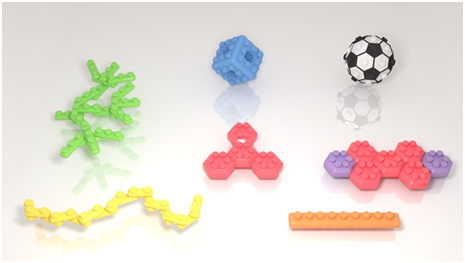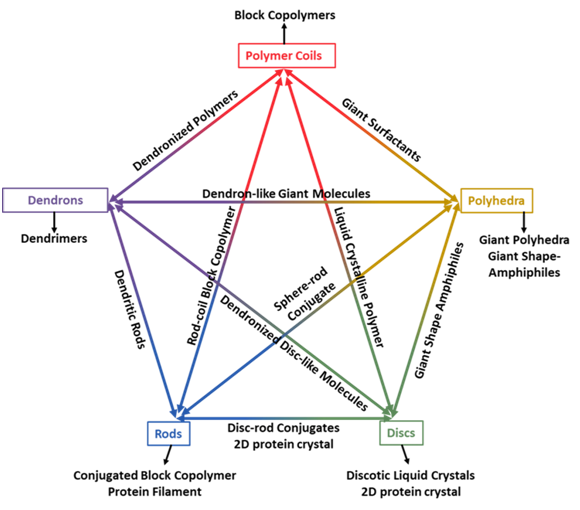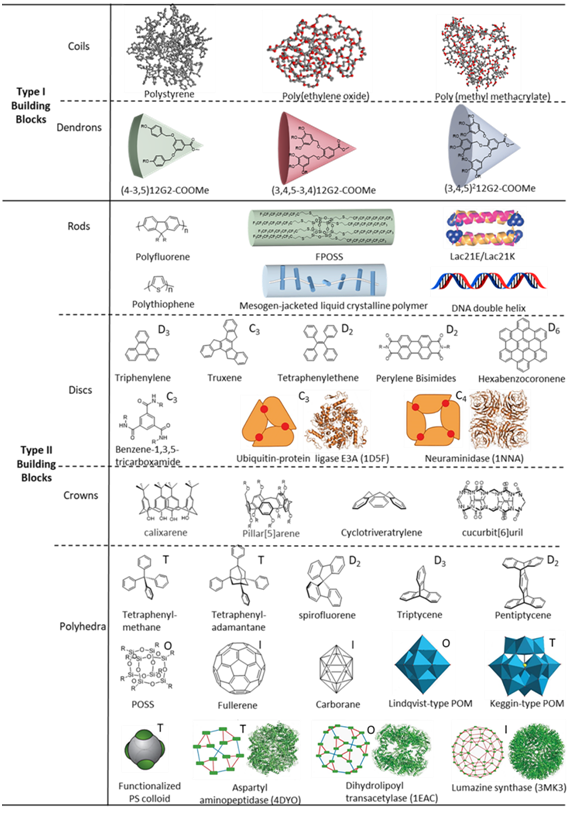
Macromolecular self-assembly has made explosive development in the last several decades, are being extensively explored in the fields of drug delivery, lithography, catalysis, molecular electronics, sensors, and so many others. It is well recognized that functions and properties of self-assembled materials depend on not only their chemical composition and structure, but also their spatial arrangement across multiple length scales. Moreover, a small difference in chemical structure of a macromolecule may dramatically change the assembled structure and functionality. Macromolecules with specific shape and inter/intramolecular interactions exhibit novel self-assembly behaviors with diverse structures and functions. Recently, Stephen Z. D. Cheng’s group and Mingjun Huang’s group both from South China Advanced Institute for Soft Matter and Technology cooperate to publish a review in Progress in Polymer Science, named “The role of architectural engineering in macromolecular self-assemblies via non-covalent interactions: A molecular LEGO approach”. In this review, the authors summarize the self-assembly of macromolecules such as polymers, dendrimers, molecular nanoparticles, colloids, DNA and proteins, from the aspect of architectural engineering and mainly focus on the periodic and quasi-periodic assembled structures. South China University of Technology is the first affiliation, Dr. Zebin Su is the first author. Professor Stephen Cheng and Professor Mingjun Huang is the corresponding authors.
In this review, the authors propose a new approach for macromolecular self-assembly: simple building blocks can be conjugated together to construct complex macromolecular motifs with different architectures and physical interactions. These macromolecular motifs can further self-assemble into ordered structures via the noncovalent intermolecular interactions. There is a striking parallelism between this approach and the way to build objects by LEGOs. Therefore, this approach also can be called the “molecular LEGO” approach.
The authors first introduce the concept of architectural engineering, then present a brief overview of supramolecular interactions and five main categories of building blocks, including polymer coils, dendrons, rods, discs, and polyhedra (Table 1). Macromolecular motifs are defined as macromolecules constructed by one or more building blocks via covalent bonds. These building blocks can be either same type of building blocks or different types of building blocks (Figure 1). Therefore, the possibility of macromolecular motifs is infinite in principle, since the possibility of the combination of building blocks is countless. For example, the combinations of polymer coils are block copolymers; the combinations of dendrons are dendrimers; the combinations of polymer coils and dendrons are polymer-dendron conjugates or dendronized polymers; the combinations of polymer coils and conjugated polymers are rod-coil block copolymers; the combinations of polymer coils and triphenylene (disc) are liquid crystalline polymer with disc-like mesogen; the combinations of POSS cages (polyhedron) and polymer coils are giant surfactants; the combinations of POSS cages (polyhedra) and tetraphenylmethane (polyhedron) are giant polyhedra; the combinations of POSS cages (polyhedron) and triphenylene (disc) are giant shape amphiphiles; the combinations of fullerene (polyhedron) and oligo-fluorenes (rods) are sphere-rod conjugates [80] and so infinite examples (in Scheme 1). The authors further discuss the detailed self-assembly behaviors of fifteen types of specific macromolecular motifs involving different building blocks. Special attention is paid to the architectural effect of macromolecular self-assembly.
Since Staudinger’s macromolecular hypothesis nearly a century ago, the development of polymer science has experienced great achievement of long-chain molecules and almost every aspect of our daily life. Macromolecules with specific shape and inter/intramolecular interactions may further enrich and promote the structures and functions of macromolecular based materials. At the end of this review, the authors propose several challenges in the field of macromolecular self-assembly. The first challenge is to further expand the stock of “molecular LEGOs” by the sophisticated designing and engineering of nanosized building blocks. The scope of building block choice may jump out of conventional flexible polymer coils and can extend to nanosized objects in other fields. They include but not limited to organic or metal-organic cages, inorganic nanomaterials such as precise clusters, nanocrystals, colloids containing different metal elements, and biomacromolecules such as proteins, viruses, and DNA. The second challenge is definitely to manipulate the hierarchical 2D or 3D structures based on architectural engineering of combinational building blocks. Current status of macromolecular self-assembly can only produce relatively simple structure as well as the unsatisfied degree of order and orientation, far from the natural hierarchical structures such as wood, bone, tendon, and glass sponges. Finally, material scientists have to face the question that what kind of exciting properties could be derived from those unprecedented self-assembled structures and how to fabricate the corresponding nanostructured materials to realize specific biological, mechanical, electric, magnetic, or optical functions. With this objective, profoundly multidisciplinary collaboration is necessary, involving the integration of cutting-edge experimental and theoretical physics, advance in simulation, synthesis, and innovative techniques of characterization. Undoubtedly, novel materials with ubiquitous, life-enhancing, and even currently unimaginable properties will be produced, despite that his is going to be a long-time research field with lots of difficulties.

Figure 1 A scheme illustrates the strategy to build macromolecular motifs with one of two types of building blocks. Macromolecular motifs which are constructed by one or two type of building block are listed above the double headed arrow.

Table 1 Summary of five categories of building blocks
Su,Z.#; Zhang,R.; Yan,X.-Y.; Guo,Q.-Y.; Huang,J.; Shan,W.; Liu,Y.; Liu,T.; Huang,M.*; Cheng,S.Z.D.*, The role of architectural engineering in macromolecular self-assemblies via non-covalent interactions: A molecular LEGO approach.Prog. Poly. Sci.,2020,103,101230.
web:https://www.sciencedirect.com/science/article/pii/S007967002030023X
